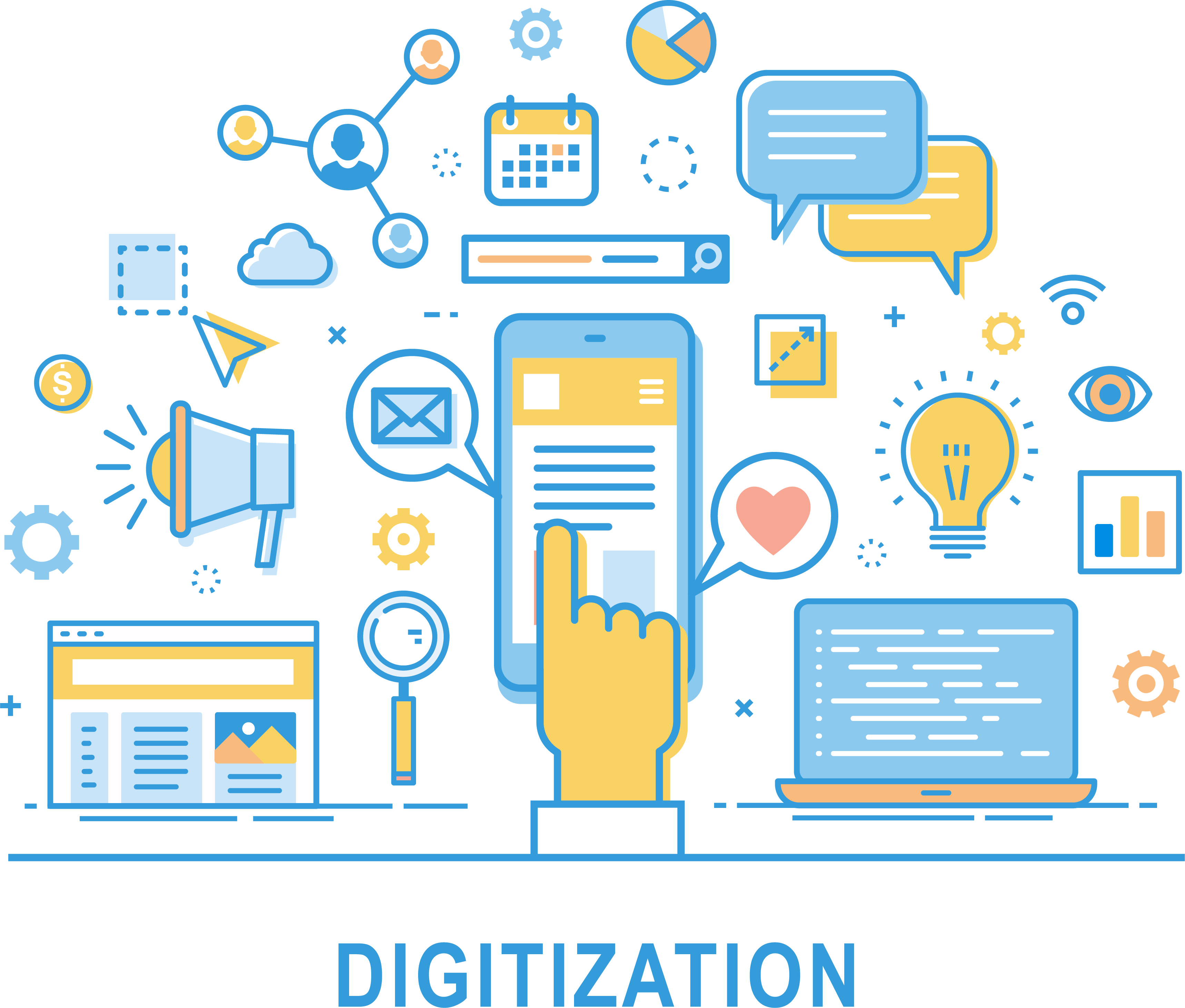Unpacking Digital Transformation
What is it? And what can you do? Digital transformation is no longer a choice. But how important is it?
Digital transformation is more than an erratic trend. It’s a mega-trend. However, less than 30% of business processes are digital. Even to this day, many business processes are manual or done on paper.
According to McKinsey, ignoring digital disruption will make revenue fall by 12%, while those embracing it will grow by 16%.
This makes sense.
The Groundwork
It’s time to start your digital journey. There’s not a choice if you want to stay current and competitive. It’s not entirely daunting – but it is inescapable.
Digital transformation requires a pioneer’s spirit. The desire for long-term scalability will test the steady hand of business leaders mired in antiquated processes and procedures. It’s not enough for an industry to adapt. Digital transformation requires an evolutionary mindset. Pushing old business norms, trial and error is part of the equation.
NASA landed astronauts on the moon using pre-cell phone technology! And microchips were still in their infancy. The Internet of Things (IoT), as a concept, wasn’t officially named until 1999. To tackle digital transformation means you’ll apply technologies that are still evolving. So far, there’s no technical solution to rule them all.
As we watch disruptive companies like Uber, Tesla, and Airbnb, inevitably, new business models are continually shaping the future, regardless of the industry.
Digital transformation is no longer a choice. It’s no longer a trend or a buzzword. How important is it, and are small steps enough?
Where do you start?
One famous Yogi Berra-ism we’ve all heard: “When you come to a fork in the road, take it.” One less well-known is: “You’ve got to be careful if you don’t know where you are going because you might not get there.”
Leveraging technology and being agile are two keys to your digital transformation.
Every process in business is bettered in some way by software. From personal to business use, software affords process efficiencies that are faster, more accurate, and more accessible.
Software evolution is a significant disrupter and, at times, an unfathomable force that requires foresight. It’s not easy to stay abreast of trends when the real trends are evolving and laying waste to legacy systems.
There’s one area to keep an eye on – APIs. APIs are the glue becoming the standard for software products dynamically driving flexibility and rapid response.
Remember way back

Get ready; I’m going to date myself. No eye-rolling either!
Remember your first introduction to technology? Perhaps it was the iPhone, iPod, or even a floppy disc. I remember the first Macintosh Plus (gasp). It had one megabyte of RAM and a SCSI for attaching peripherals like hard drives or scanners. This was revolutionary.
It wasn’t incredibly intuitive – maybe because it forced our brains to work differently, but it sure was captivating. I struggled to understand why I was feeding many floppy discs into the machine. Did I have them in the right order? Did I leave them in the drive? The fascination grew as I watched the screen transform, controlled by clicks from my mouse and keyboard.
The whirling hard drive and fan, a source of incredible heat, provided new sounds. After an hour, the computer became an additional heat source for a cold room. The shrill claxon from dial-up modems and the whirling sound while loading floppy discs loaded were new notes in a musical repertoire. Like Pavlov’s dog, I was trained by these sounds. One sound caused a cringe, the other stirred impatience.
Today these sounds are nonexistent. Ah, the good old days. Now you can roll your eyes.
It wasn’t naturally intuitive, but it sure was captivating. I struggled to figure out how the software worked. Once I figured it out, I was fascinated watching the screen transform controlled by a mouse and keyboard. For the first time, I could sit for hours – not one to read a manual (did they even have one?), but instead, I clicked around in endless discovery journeys. A wide smile and awe-filled eyes transformed my face.
I couldn’t even stop at total immersion.
What is Digital Transformation
According to Bill Schmarzo in a CIO article – Digital Transformation is applying digital capabilities to processes, products, and assets to improve efficiency, enhance customer value, manage risk, and uncover new monetization opportunities.
To make it more transparent and actionable, he adds – “Digital capabilities are: electronic, scientific, data-driven, quantified, instrumented, measured, mathematics, calculated and/or automated.”
Software evolution is a consuming force. APIs are the glue becoming the standard for software products dynamically driving flexibility and rapid response.
Every process in business is bettered in some way by software. From personal to business use, software affords process efficiencies that are faster, more accurate, and more accessible.
Software Enables the World
Part of digital transformation revolves around software and how it makes a difference in our lives. For instance, you can shop on Amazon by merely giving Alexa a few commands. Or hail a ride from an app. In some cities, you can hop on a scooter and whisk around the streets using a simple app interface. You can order coffee using an app and have it ready for pick up and pay with Apple Pay.
Joining the digital revolution requires a high tolerance for trial-and-error adaptation as you navigate the shifting sands of technology innovation.
The Rise in Digital Technology

First and foremost, realize your business may have a disconnect between the tools your employees seamlessly use in their everyday lives – from apps to social networks, and the archaic software systems they have to use at work. Easily you can see where this leads to inefficiencies and, in some cases, loss of morale.
Technology drives towards naturalization and an intuitive user interface and design. Today children naturally commandeer their parent’s iPads and intuitively navigate through endless apps. I’m convinced this is proof they are born with silicon chips embedded in their compact digital-disrupter frames.
There it is; you have no real choice but to change. Disruption will have to occur in your business process or internal technology systems and all the way through to your business model. If you keep in mind words like intuitive user interface, beautiful design (yes!), and convenience (easy and quick clicks), you have begun to change the world!









